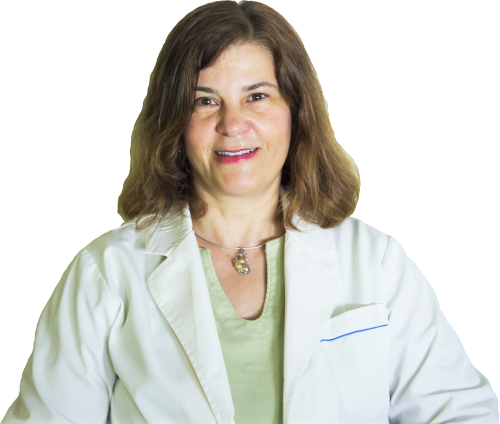Acupuncture, one of the oldest healing practices in Traditional Chinese Medicine (TCM), has been used for thousands of years to restore balance, ease pain, and promote overall wellness. At The Han Institute in West Lafayette, Dr. Angelica Kokkalis combines her extensive training in both Eastern and Western medicine to help patients experience the benefits of this time-honored therapy.
What does acupuncture do?
In TCM, acupuncture works by stimulating specific points on the body, known as acupoints, to influence the flow of Qi (pronounced chee), or vital energy. When Qi becomes blocked or imbalanced, it can lead to pain, illness, or emotional distress. By gently inserting fine, sterile needles into these points, acupuncture helps to:
- Restore balance in the body’s energy systems
- Relieve pain by stimulating the nervous system and releasing endorphins
- Support emotional health by calming the mind and reducing stress
- Improve circulation and reduce inflammation
- Enhance the body’s natural healing response
Modern research also shows that acupuncture affects neurotransmitters, hormones, and the immune system, making it a powerful complement to conventional care.
What are the pros of acupuncture?
- Natural and drug-free – Offers an alternative to medications for pain and stress.
- Personalized treatment – Each session is tailored to your body’s needs.
- Broad application – Can help with pain management, digestive issues, sleep disturbances, anxiety, women’s health, and more.
- Minimal side effects – When performed by a licensed acupuncturist like Dr. Kokkalis, acupuncture is safe and gentle.
- Supports whole-body wellness – Goes beyond symptom relief to address root imbalances.
What are the cons of acupuncture?
- Temporary soreness or bruising – Some patients may feel mild tenderness at needle sites.
- Multiple sessions may be needed – Acupuncture is often most effective as part of a series of treatments.
- Not a quick fix – Healing takes time and consistency.
- Varies by individual – While many experience great benefits, results can differ from person to person.
A balanced approach
At The Han Institute, Dr. Kokkalis integrates acupuncture with other holistic therapies—including herbal medicine, nutrition guidance, and innovative treatments for neurological and chronic conditions. Her goal is to create a safe, calming environment where healing can unfold naturally.
Are you in the West Lafayette, Indiana area and curious if acupuncture could help you?
Contact Dr. Angelica Kokkalis to schedule a consultation: Schedule a Visit or call (765) 497-0817.
In Traditional Chinese Medicine (TCM), acupuncture has been practiced for thousands of years to restore balance, promote healing, and enhance well-being. While acupuncture is generally safe and highly beneficial, certain acupuncture points are considered “forbidden” during pregnancy due to their powerful effects on the body.
These 5 forbidden points are:
- LI4 (Hegu) – located on the hand, between the thumb and index finger.
- SP6 (Sanyinjiao) – found on the inner leg, above the ankle.
- BL60 (Kunlun) – located near the ankle, behind the lateral malleolus.
- GB21 (Jianjing) – found on the shoulder, midway between the neck and the edge of the shoulder.
- BL67 (Zhiyin) – located at the tip of the small toe.
Why Are These Points “Forbidden”?
These points are not “forbidden” in the sense that they are harmful in general. In fact, outside of pregnancy, they are commonly used for a variety of therapeutic purposes such as relieving pain, reducing stress, or regulating energy flow. However, during pregnancy, these points are contraindicated because:
- They can stimulate uterine contractions, which may lead to miscarriage or premature labor.
- They strongly move qi and blood, creating effects that may destabilize the delicate balance required for a healthy pregnancy.
- Their stimulation can be too intense for the body during this sensitive time.
Safe and Supportive Acupuncture in Pregnancy
While these five points are avoided, many other acupuncture points are safe and even highly beneficial during pregnancy. Acupuncture therapy can help:
- Ease morning sickness and nausea
- Relieve lower back and hip pain
- Support healthy digestion and sleep
- Reduce stress and anxiety
- Prepare the body for labor in the final weeks (using safe techniques and points)
At The Han Institute, Dr. Angelica Kokkalis carefully considers each patient’s health history, stage of pregnancy, and overall constitution when creating a treatment plan. Safety and holistic support are always at the forefront.
In the wisdom of classical Chinese medicine, health is not merely the absence of illness but the harmony of body, mind, and spirit with the natural rhythms of life. One of the simplest yet most profound teachings from this tradition is known as the Four Golden Rules of Acupuncture. These principles offer timeless guidance for maintaining balance, supporting the body’s energy (Qi), and cultivating overall well-being.
1. Eat only when hungry
In today’s world, eating often happens out of habit, convenience, or emotion rather than true hunger. By eating only when hungry, we allow the digestive system to function at its best, giving the body the nourishment it truly needs without burdening it with excess.
2. Drink only when thirsty
The body has an innate intelligence that signals when hydration is needed. Drinking only when thirsty honors these signals, preventing overconsumption and supporting the natural balance of fluids and energy within the body.
3. Take rest when tired
Rest is a vital part of health. Rather than pushing through fatigue, giving the body permission to rest when it needs to helps preserve Qi, strengthens immunity, and enhances the body’s ability to recover and heal.
4. Sleep early
Restful, restorative sleep is one of the cornerstones of health. Going to bed early aligns the body with natural circadian rhythms, allowing the body and mind to recharge and regenerate during the night.
Why These Rules Matter
Together, these 4 Golden Rules serve as gentle reminders to live in alignment with nature and with ourselves. They protect the body from unnecessary strain, nurture vitality, and allow the body’s own healing processes to flourish.
At the Han Institute, Dr. Angelica Kokkalis integrates these principles into her acupuncture practice, encouraging patients not only to receive treatment but to embrace these lifestyle practices as part of a holistic approach to wellness.
By following these simple but powerful rules, you give yourself the gift of balance, resilience, and the deep healing that comes from living in harmony with your own rhythms.
Dry needling has gained attention in recent years as a therapeutic technique used to address muscle pain, movement issues, and trigger points. While it uses thin needles similar to acupuncture, its approach, purpose, and background are quite different. For patients curious about this method, here is what you need to know.
What Does Dry Needling Actually Do?
Dry needling involves the insertion of very thin, sterile needles into muscle tissue near “trigger points.” These trigger points are tight, sensitive areas of muscle fibers that can cause pain or restrict movement. By stimulating these points, dry needling helps release muscle tension, improve circulation, and restore mobility. Many patients report reduced pain and improved range of motion after treatment.
What Are the Downsides of Dry Needling?
Like most treatments, dry needling has potential side effects. These may include:
- Temporary soreness or bruising at the needle site
- Mild bleeding
- Fatigue or lightheadedness in some patients
While generally considered safe when performed by trained providers, dry needling should only be done by licensed professionals who understand anatomy and sterile technique.
Why Is Dry Needling Sometimes Controversial or Restricted?
In some states and countries, dry needling is restricted or even considered “illegal” for certain practitioners. This is often due to professional scope-of-practice debates. For example, some medical and acupuncture boards disagree on who is qualified to use the technique. The controversy is less about patient safety and more about professional licensing and training standards.
Dry Needling vs. Acupuncture: What’s the Difference?
Though they use the same type of thin needles, dry needling and acupuncture are distinct practices:
- Dry Needling is rooted in Western medicine. Its focus is on muscle physiology, trigger points, and pain management.
- Acupuncture, on the other hand, is a traditional Chinese medicine practice with thousands of years of history. It is based on restoring the balance of energy (Qi) in the body by stimulating specific points along meridians.
Both techniques can reduce pain and promote healing, but they differ in philosophy, training, and approach.
How Does Dry Needling Work?
When the needle penetrates a trigger point, it can cause a small “twitch response” in the muscle fibers. This twitch helps reset the muscle, reduce tension, and encourage normal function. The body also responds by increasing blood flow to the area, releasing endorphins, and calming overactive nerve signals—leading to pain relief and healing.
Benefits of Dry Needling
- Relieves chronic and acute muscle pain
- Improves mobility and flexibility
- Reduces tension headaches and jaw pain (TMJ)
- Supports recovery from sports injuries
- Complements physical therapy for long-term results
Final Thoughts
Dry needling can be a powerful tool for pain relief and muscle recovery, especially when performed by a skilled provider. However, it is not a substitute for acupuncture or other traditional therapies. At the Han Institute, Dr. Angelica Kokkalis brings decades of expertise in acupuncture and traditional Chinese medicine to help patients achieve holistic healing. If you’re curious about how acupuncture compares to dry needling—or which option may be best for your health—schedule a consultation today.
The United States military has found that Traditional Chinese acupuncture provides immediate relief for acute and chronic pain without the risk of addiction that can come from opioids. The process involves a small needle inserted into the ear, which has a “central effect” on the nervous system and the cingulate gyrus, an area of the brain that processes pain.

The US Military is now using acupuncture to treat pain instead of addictive pills.
“They don’t have to wait hours for medications to take maximal effect or endure side effects, like drowsiness or allergic reactions, of common pain medications,” said Air Force Col. Lynda Vu, who recently administered Battlefield Acupuncture. “This allows personnel to go back to the fight with minimal impact to continuing mission operations.”
Acupuncture may not work on every patient, but it can also be used in combination with oral medications, which Niemtzow said are helpful treatment options when used appropriately. Patients are encouraged to explore other holistic treatment options, and to look beyond medicine and surgery. Vu recommended full spectrum acupuncture as a complementary therapy.
